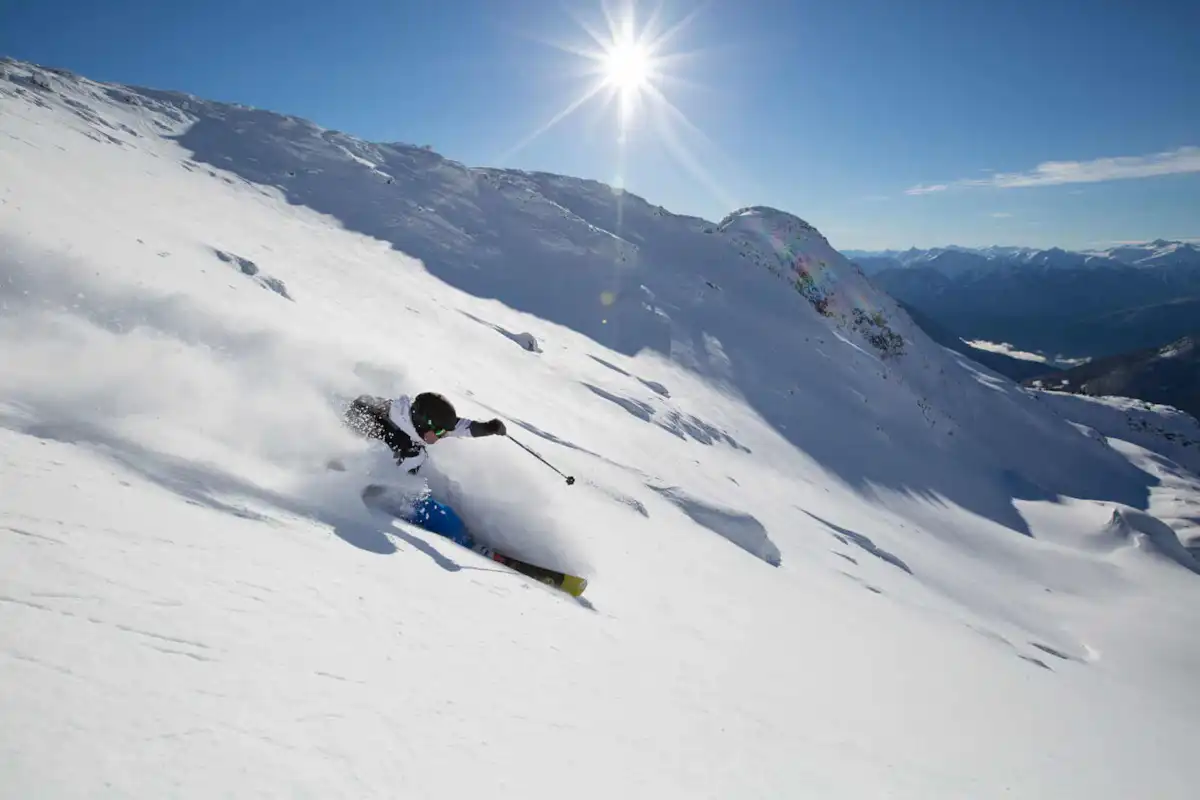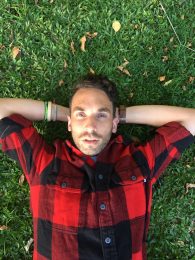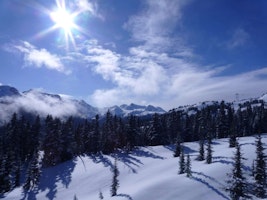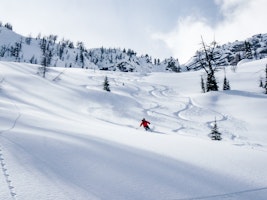Over the last few decades, Whistler has become synonymous with unbridled wilderness, exciting winter sports, incomparable getaways, and one of the world’s best places to make your skiing dreams come true. Its position as a world-class ski destination was further cemented with the 2010 Winter Olympics, hosted by Vancouver, which saw many events featured in the pristine peaks and top tier venues of the mountain and its surrounding terrain.
Whistler is known as both a town in British Columbia in the Coast Mountains of Canada as well as a mountain (2,182m). Combined with Blackcomb Mountain (2,284m), it forms North America’s largest ski resort, officially known as Whistler Blackcomb. When referring to Whistler, one is generally speaking of the area covered by one or all of these identifiers.
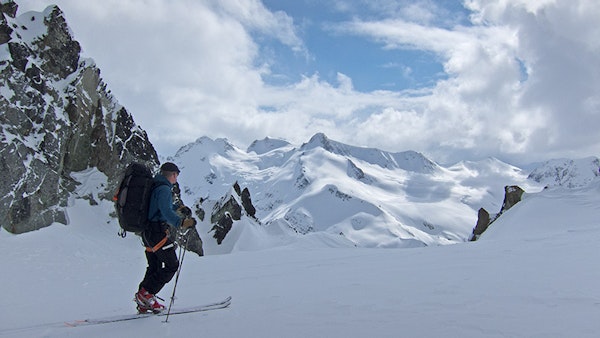
The resort at Whistler boasts well over 8,000 acres of skiable terrain, more than 200 trails, 17 restaurants dotting both mountains, and 37 lifts. With all of this groomed ground covered, skiers can also expect equally immense backcountry, which can extend into and around the Coast Mountains outside of Whistler and Blackcomb.
There is so much to experience here, with lines, runs, and activities to accommodate newbies and professionals alike. Come find out why Whistler is the go-to destination for snow athletes across the globe and check out some remarkable backcountry skiing programs!
What makes Whistler so great?
Whistler is North America’s largest resort, but it welcomes qualified skiers to head off into the ungroomed landscape for some exploring of their own. Though there are safety restrictions and daily access assessments, these special lifts open the door to unencumbered Canadian wilderness.
And what a backcountry! The region is renowned for its annual snowfall – averaging more than 38 feet and 11.5 meters! – and the quality of its snow: light, dry powder. This perfect blend of terrain, access, and remote snowpack is the driving force behind the more than two million visitors a year who make their way to Whistler.
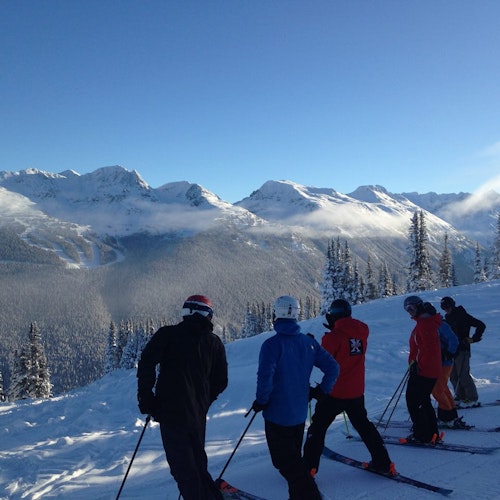
Perhaps a close second to the premium quality of the snow is the abundant and varied terrain. Making your way through the scenery outside the resort’s boundaries offers high cols, alpine bowls, steep line drops, and tree-lined runs. Whistler throws every obstacle and objective at you, keeping you guessing and always in awe of the sheer beauty of British Columbia.
Where to Go
There is a wealth of terrain to visit when you come to Whistler, but here is a quick guide that will help you pick the perfect routes and runs for your specific trip.
Spearhead Traverse
This is a Whistler classic, as it takes you along the horseshoe path from Whistler Mountain to Blackcomb Mountain. Considered a rite of passage for anyone who considers themselves a Canadian powder hound, this can last anywhere from two to for days and cover 25 to 35 kilometers. Traverse glaciers (13 of them, to be exact) and mountain passes (11 high ones) on your way to becoming a true Whistler skier.
For those who are looking for an expedition on par with the Haute Route of Chamonix and Zermatt, this is the trail for you. Check out this trip from AMGA-certified guide Michael and take two days to complete the Spearhead Traverse.
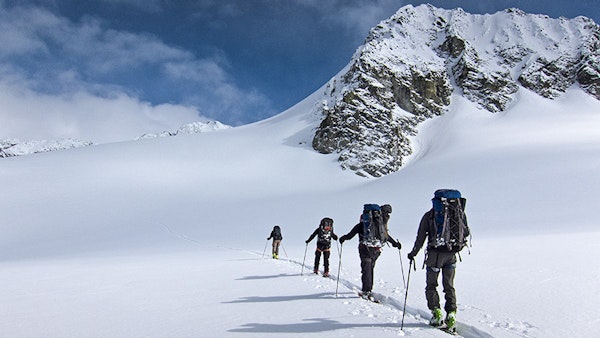
Mt. Pattison – the Northwest Face
Not for the faint of heart, this trail is steep for steep skiing. Cruise around Blackcomb and the East Col to access the route. Your trip will include crossing a lake and two glaciers (Trorey and Decker) before heading up the summit. There is some moderate gliding to accompany the steeper portions; just be sure you are physically capable of handling the challenges of this trail.
Garibaldi Neve Traverse
Another 35-kilometer traverse? You bet! The Garibaldi Neve Traverse is between Squamish and Whistler. It begins at the Garibaldi Provincial Park trailhead and gives you three days on the glaciated mountains of the park, including Atwell and Garibaldi itself. High alpine runs, Sentinel Glacier, and exciting natural scenery highlight the program, with the Elfin Lakes Hut on the edge of the Neve as the icing on the cake for some programs.
There are lots of variations on this route, so talk to a guide and figure out what would work best for your backcountry needs. This program from IFMGA-certified guide Brian features some exciting camping and starts from the Elfin Lakes Trailhead.
Other options for the Garibaldi Neve Traverse include this trip from Ross, an IFMGA-certified guide, which features a stay at the Elfin Lakes Hut.
Cowboy Ridge
This run is not as difficult to reach as some of the other backcountry options at Whistler and is the final leg of the Spearhead Traverse. Cowboy Ridge is a great option for someone who has a few hours for a challenging and manageable trail. You can access it without setting foot on a glacier, making it a reasonable option for the less-experienced backcountry skiers.
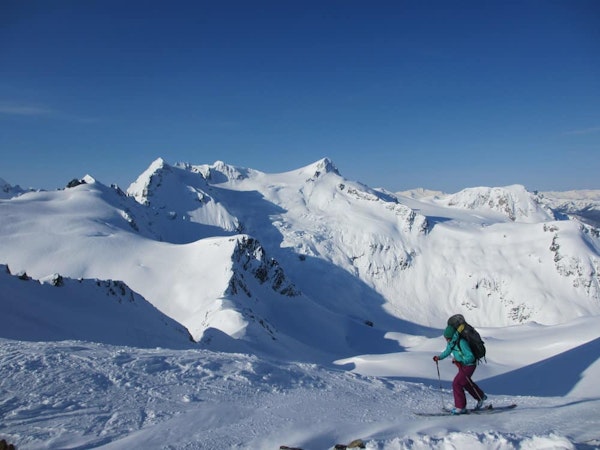
Contact ACMG-certified guide Joe and ask about his day program which can fit in Cowboy Ridge and any other objectives you might be considering.
DOA
This is one of the most popular backcountry routes, which means it can be one of the most crowded. It is one of the longest couloirs on the continent that can be reached from the resort. It features some steep, narrow terrain and makes for a thrilling run to add to your day.
Check out this program from ACMG-certified guide Simon and drop right into this accessible run that is an absolute blast!
Duffey Lake
Head past Whistler and Pemberton and you will find yourself at Duffey Lake, a hidden gem further north in the Coast Mountains. The couloirs here are just as steep as the off-piste just outside of the resort boundaries, with the added bonus of being further away from the crowds. Get your tree skiing done here while taking on some high level glaciated terrain and long runs.
Here is a program from IFMGA-certified guide Andrew that can be personalized just for you that takes you to Duffey Lake for a day or more of premium backcountry conditions.
Pemberton and Beyond
Some of the backcountry programs take place in Squamish – just south of Whistler – and in Pemberton – just north of Whistler. They still have the same great snow that makes the region an international icon in the skiing world. This backcountry skiing program in Pemberton from IFMGA-certified guide Ross is a great way to spend a day at Whistler. For a four-day challenge, consider this Birken program from Sam, an ACMG-certified guide, which includes camping and truly remote skiing experience.
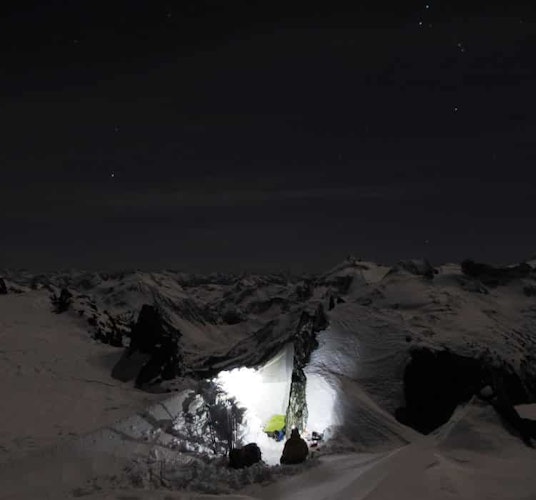
There are a TON of great trails, lines, runs, and traverses available in Whistler, so please check out the programs here and see if you can find the trip of a lifetime with one of the great certified guides.
Best Season to Go
Whistler has become a year round destination – you can mountain bike down the some pretty incredible trails in the summer – but its prime season begins in winter. November brings the start of its generous snowfall, and the season rides this wave of powder through April and even into May. If you’re looking for the meatiest runs, try a program anywhere from late December to late March.
Whistler is known for its extremely long ski season, so bookending a trip at the beginning or end of this time frame can also lead to an admirable adventure. November averages roughly 2.3 meters of snow each year, and March 2.4 meters. Keep an eye on snowfall statistics as ski season approaches (or starts to close) and you can snag a sweet trip into untouched powder without another skier in your backcountry bubble.
How Much Does it Cost
Make sure you grab a certified guide before heading off into the backcountry. Having a professional at your side for a trip into this vast snowscape is critical for safety, satisfaction, and ultimately fun. They will help you ski like a local, offer invaluable information about the region, and tailor a personal trip you’ll be excited to repeat the next chance you get. A guide enhances your trip, so you can focus on the skiing part – you know, the good stuff.
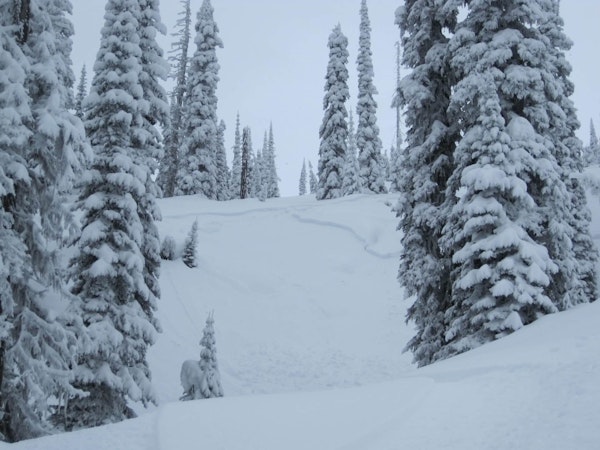
Keep in mind that the number of participants, the difference between a public and private program, the inclusion of fees (like a backcountry ski pass of around $62 CAD), and the duration of the program can alter the price tag, even for seemingly similar programs. From basic deals that will provide little more than a sidekick on the slopes to full-service packages that cover your every step on and off the snow, there is a program that fits the wants and needs of every skier under the sun.
For day trips, a basic backcountry ski program with a group of eight starts around $107 CAD for a knowledgeable and professional expert to guide you. This program from IFMGA-certified guide Andrew is a great pick for a day selecting challenging and thrilling lines. Going solo, one person can expect private day trips to start at roughly $225 CAD per person. If this is more your speed, check out this full day journey from Ross.
Backcountry lift tickets are available exclusively to prepared athletes, so make sure you, your team, and your guide have proper equipment. This includes an avalanche transceiver, probe, shovel, skins or snowshoes, and a cell phone, as well as the ability to use them.
How to Get There
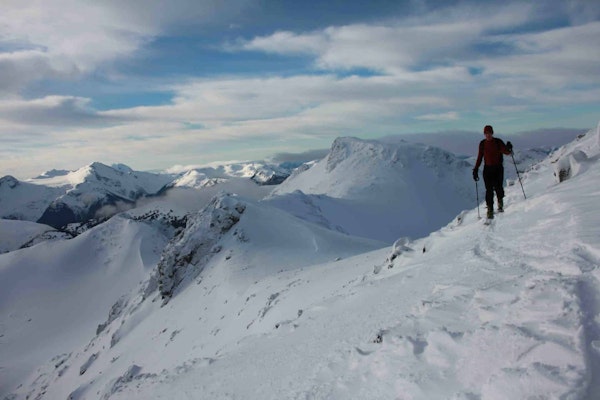
Its proximity to Vancouver, sitting just 125 kilometers to the north, makes Whistler extremely easy to reach. As one of the world’s premiere ski destinations, you can choose from a wide range of options to scoot into this delectable backcountry.
The Vancouver International Airport (140km away) is the most common and popular way to get there. From the airport, it takes two or three hours to drive to mountain. If you don’t have a car or feel like renting a car and driving up the Sea-to-Sky Highway (better known as British Columbia Highway 99), there is also a scenic shuttle directly from the Vancouver Airport. Prices for the shuttle are currently around $69 CAD.
Pemberton, British Columbia, is within 25 kilometers of Whistler Village. While there are no scheduled flights in or out of the Pemberton Regional Airport, charter services are available for anyone looking for the closest airport serving the region.
There is an upscale train service that offers scenic tours through British Columbia with a stop in Whistler. For those who want all the fixings for their Whistler vacation, this would be a great way to see the rest of the Coast Mountains. There are even different routes connecting Seattle in the United States, Banff in Alberta, and of course Vancouver just to the south of Whistler.
***
Grab your gear, pick a certified guide from the ones listed at Explore-Share and head to the backcountry of Whistler! Join the exclusive group of skiers who have experienced the best place to ski in all of North America… and maybe the world!
